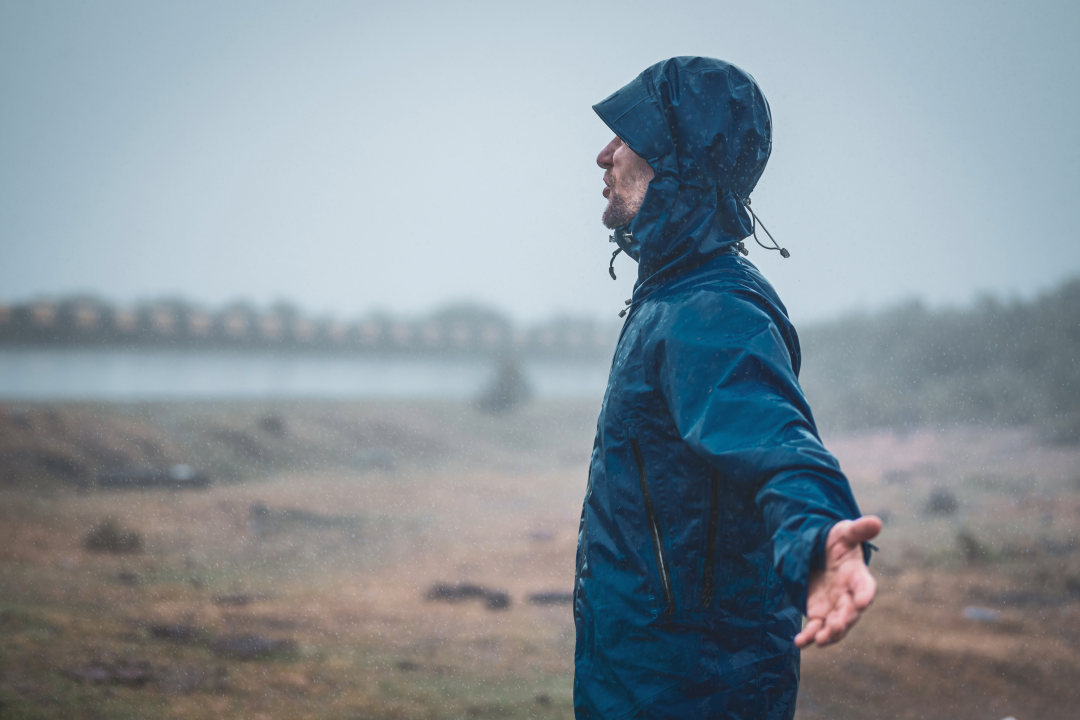
🌧️ Rain Jackets: The Engineering of Waterproof Breathability
Every hiker has been there. You shell out for a “waterproof” jacket, step onto the trail in a downpour, and within 30 minutes you’re drenched in your own sweat. Let’s peel back the layers on rain jackets and see what the engineering actually looks like so you can pick one that works as hard as you do.
The Problem: Waterproof vs. Breathable
Rain jackets are designed to solve two competing problems:
- Keep rain out.
- Let sweat escape.
Sounds simple, but here’s the engineering challenge: water droplets are about 20,000 times larger than water vapor molecules. So how do you stop the big stuff while letting the small stuff through? That’s where membrane tech comes in.
The Technology Inside
1. Membranes & Laminates
- Gore-Tex, eVent, Pertex Shield — these are examples of microporous membranes.
- Engineering principle: billions of microscopic pores per square inch. Each pore is too small for liquid rain, but large enough for vapor.
- Jackets are often 2-layer, 2.5-layer, or 3-layer constructions:
-
- 2-layer: Cheaper, less durable. Mesh lining protects membrane.
- 2.5-layer: Lightweight, coated print protects membrane. Common for ultralight hikers.
- 3-layer: Most durable, uses fabric layers bonded around membrane.
2. Durable Water Repellent (DWR)
- The first line of defense — DWR is a surface coating that makes rain bead up and roll off.
- Problem: It wears off. Dirt, sweat, and abrasion break it down.
- Engineering fix: Reapply with sprays/washes, but no DWR lasts forever.
3. Seam Taping
- Even the best fabric fails if the seams leak.
- Manufacturers seal seams with waterproof tape.
- Weak spot check: If a jacket isn’t fully seam-taped, it’s not truly waterproof.
4. Ventilation Features
- Pit zips, mesh pockets, two-way zippers.
- Engineering principle: Sometimes old-school venting outperforms “breathable” fabric.
- Think of these as mechanical solutions to a chemical/physical limitation.
Tradeoffs: The Design Triangle
Rain jackets are always a balance between:
- Weight → ultralight often sacrifices durability.
- Durability → burlier jackets breathe less.
- Cost → cutting-edge membranes = $$$.
No jacket can max all three. Knowing which one matters most for your trips is the engineer’s edge.
Practical Trail Takeaways
- Day hikers: 2.5-layer jackets = lightweight, packable, good for short trips.
- Backpackers / Thru-hikers: Invest in a durable 3-layer membrane. Weight adds up, but so does reliability.
- High-output activity (running, fastpacking): Prioritize breathability + venting. Pit zips matter more than “Gore-Tex” branding.
Final Word: Engineer Your Protection
Rain jackets are more than just plastic shells. They’re carefully engineered systems balancing waterproofing, breathability, weight, and cost. Understanding those tradeoffs puts you in control, so when the skies open up, you’re not choosing between soaked or suffocated.
— Engineering Outdoors
